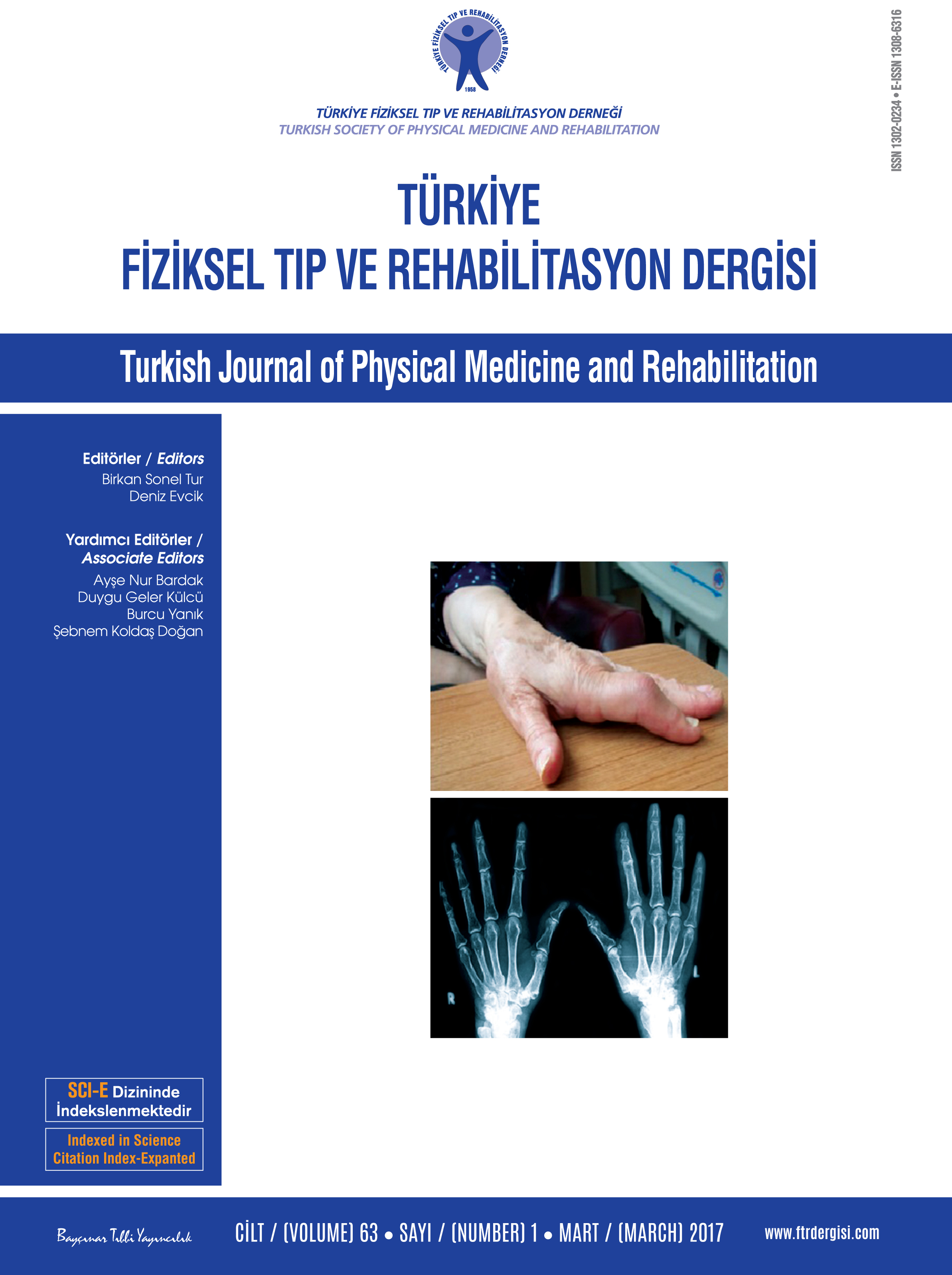Black colored intervertebral disc; ochronosis: A case report
2 Department of Pathology, Medical Faculty of Celal Bayar University, Manisa, Turkey
3 Department of Neurosurgery, Buca State Hospital, Bursa, Turkey DOI : 10.5606/tftrd.2017.03789 Alkaptonuria is a rare inborn error of metabolism caused by mutations in the gene responsible for the production of homogentisate 1,2-dioxygenase, an enzyme that plays an important role in the normal degradation of the aromatic amino acids tyrosine and phenylalanine. Defective production of this enzyme results in the accumulation of homogentisic acid, a tyrosine degradation product, in the bloodstream. Accumulation of homogentisic acid and its metabolites in tissues cause ochronosis. The word ochronosis refers to the dark bluish black discoloration of connective tissues including the sclera, cornea, auricular cartilage, heart valves, articular cartilage, tendons, and ligaments. In this article, we present a 38-year-old male patient with alkaptonuria associated degenerative L4-5 disc hernia, in which the patient was diagnosed after lumbar discectomy. Keywords : Alkaptonüri; lomber disk hernisi; okronozis


















